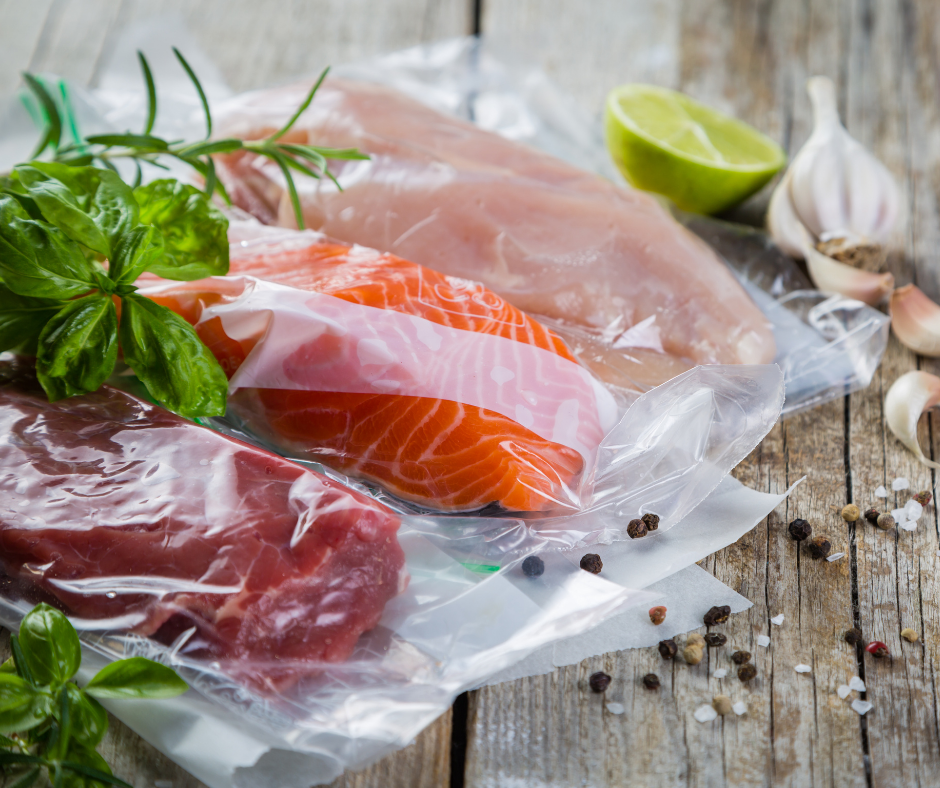15/01/2024
Vacuuming, important information
Vacuum packaging extends the storage time of food by three to five times. Vacuum packaging has long been used, particularly in the food industry.
The better the vacuum, the longer the food will last.
Food exposed to air undergoes chemical changes. These changes are caused by microorganisms, temperature fluctuations, and enzymes and are responsible for food spoilage.
Vacuum-packed foods have a significantly longer shelf life than unpackaged foods. The decomposition process is significantly slowed. However, the decisive factor is always how fresh the product is packaged. Therefore, vacuum-packaging is recommended as soon as possible after purchase.

The extended shelf life allows you to save money by buying in larger quantities and taking advantage of offers:
- Longer shelf life / optimal product and storage hygiene.
- There is more space in the freezer.
- No product loss (avoiding drying out, mold and freezer burn).
- This is how you marinate quickly and sustainably (20 minutes in a vacuum is enough).
- Increased sales through longer product shelf life (more variety and distribution of product ranges).
Shelf life
Untreated, refrigerated foods
beef
poultry
Whole fish
deer
Hard and semi-hard cheese
Vegetables
Fruits
3 to 4 days
2 to 3 days
1 to 3 days
2 to 3 days
15 to 20 days
1 to 3 days
5 to 7 days
vacuum packed
8 to 9 days
6 to 9 days
4 to 5 days
5 to 7 days
25 to 60 days
7 to 10 days
14 to 20 days
Meat
Fish
Vegetables
not vacuum packed
4 to 6 Months
3 to 4 Months
8 to 10 Months
vacuum packed
15 to 20 Months
10 to 12 Months
18 to 24 Months
Bread
Cookies
Pasta
Rice
Flour
freeze-dried products
not vacuum packed
1 to 2 days
4 to 6 Months
5 to 6 Months
5 to 6 Months
4 to 5 Months
1 to 2 Months
vacuum packed
6 to 8 days
12 Months
12 Months
12 Months
12 Months
12 Months
